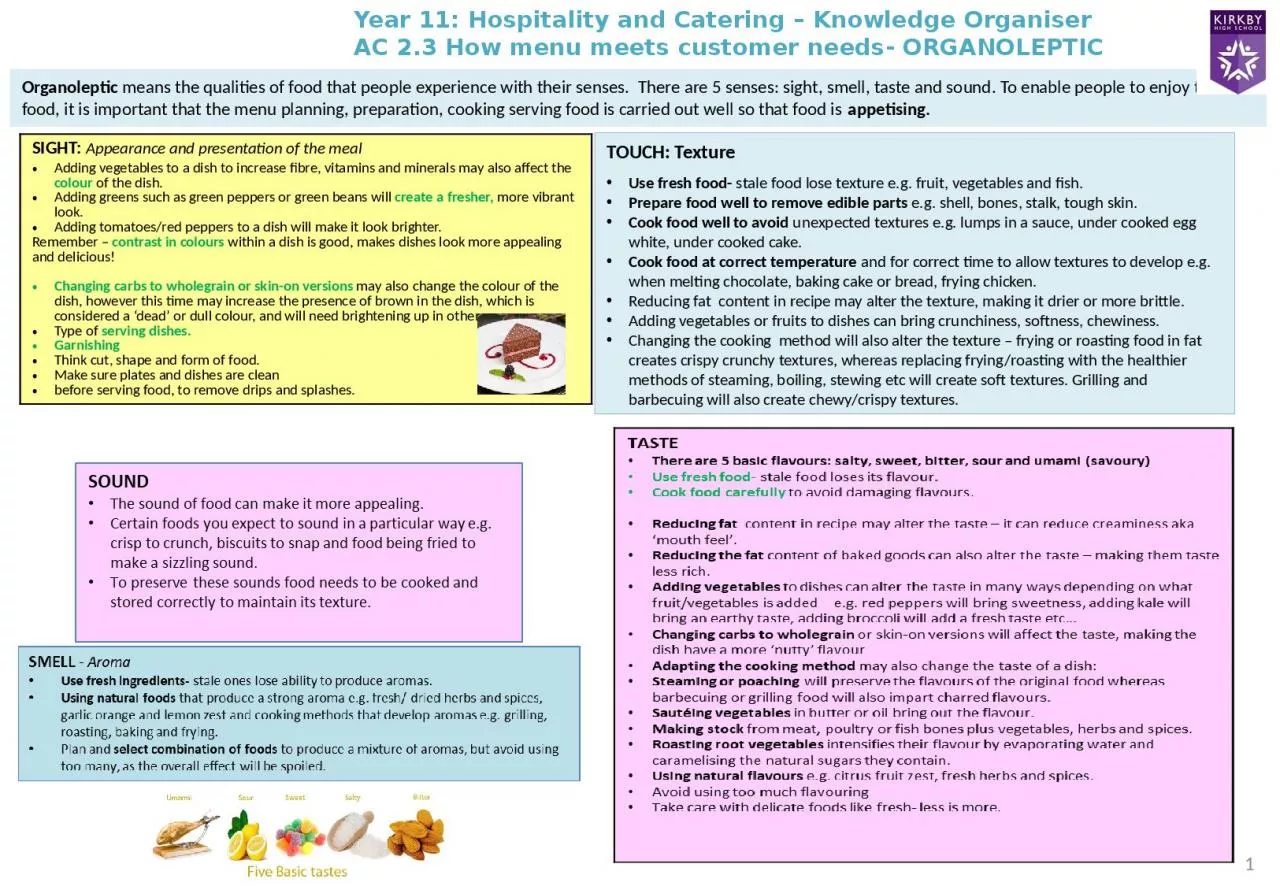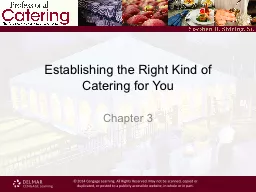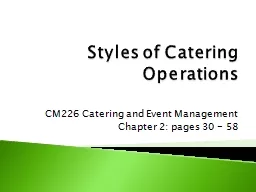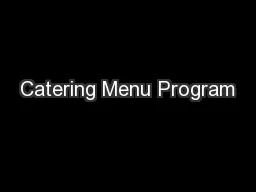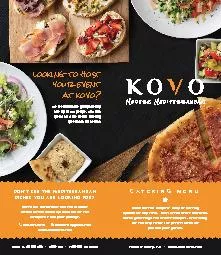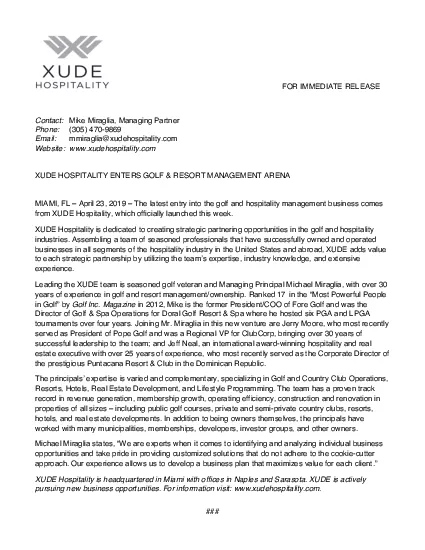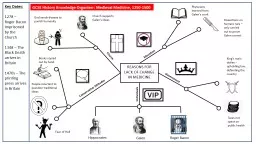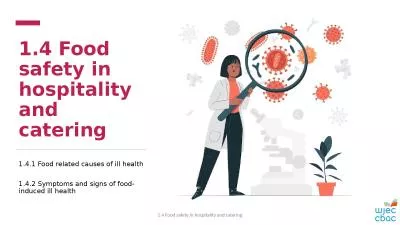PPT-1 Year 11: Hospitality and Catering – Knowledge Organiser
Author : emma | Published Date : 2024-02-09
AC 23 How menu meets customer needs ORGANOLEPTIC SIGHT Appearance and presentation of the meal Adding vegetables to a dish to increase fibre vitamins and minerals
Presentation Embed Code
Download Presentation
Download Presentation The PPT/PDF document "1 Year 11: Hospitality and Catering – ..." is the property of its rightful owner. Permission is granted to download and print the materials on this website for personal, non-commercial use only, and to display it on your personal computer provided you do not modify the materials and that you retain all copyright notices contained in the materials. By downloading content from our website, you accept the terms of this agreement.
1 Year 11: Hospitality and Catering – Knowledge Organiser: Transcript
Download Rules Of Document
"1 Year 11: Hospitality and Catering – Knowledge Organiser"The content belongs to its owner. You may download and print it for personal use, without modification, and keep all copyright notices. By downloading, you agree to these terms.
Related Documents

